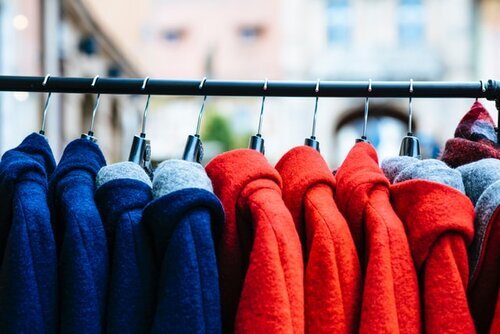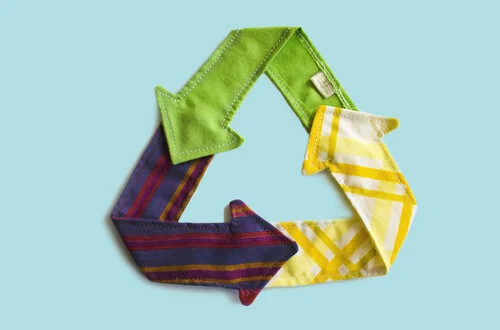Why Bio-Leather is Just What the Fashion Industry Needs
Your next pair of leather shoes or belt could very well be made in the lab, all without sacrificing a single animal.
In an era of increased environmental awareness, the fashion industry finds itself at crossroads, grappling with the need to redefine its practices to better align with a more sustainable future. The use of animal leather in fashion goods, especially those from the luxury sector, have always made animal and sustainability activists cry foul. The answer to the industry’s dilemma seems to be the innovation of bio-leather, a game-changing alternative to traditional animal leather.
10 Challenges facing Fashion in 2023
The fashion industry continually shifts and adapts to current trends, giving rise to challenges and issues to address. However this time around, most of the challenges stem from global political and economical instability, which might prompt a slowdown in the fashion landscape. Brands must overcome these 10 challenges to survive and thrive in the year ahead.
Cotton and the Closed-Loop Economy
Cotton is possibly one of the most polarizing crops ever, and is their intensive farming process worth it for its multitude of benefits? And where does it fit within the closed-loop economy? Read on to find out more!
Hidden Toxins in Our Clothes
The fast fashion and wholesale industry are two of the biggest proponents of the use of chemicals in our clothes, mainly for dyeing and treatments purposes.
As consumers, there’s a likelihood of contracting health-related risks as well in the long run, when wearing clothes doused in toxins.
Behind the Ultra-fast Fashion Craze
Ultra-fast fashion has had a phenomenal rise to everyone’s social media feed. Behind the #hauls, #giveaways, and sponsored posts, hide some obscure companies that exploit its workers and the planet.
6 Biggest Themes Driving Fashion in 2022
The global fashion industry is expected to recover this year, speed up sustainability efforts, and even branch into new realms i.e. the metaverse 👓
Microplastic — Fashion’s Hidden Menace
It is estimated that 35% of all microplastics in the world’s oceans came from the laundering of synthetic textiles. The increase in microplastics can be blamed on the rapid ascent of fast fashion.
From Fruit to Fabrics (Part 2)
Food-derived garments or biofabrics, are seen as one of the solutions to pollution and waste issues that plague the fashion industry, and surrounding communities that rely on them for a living. Aside from mitigating pollution and excessive chemical use, biofabrics, especially those derived from food waste, are much lighter on the environment.
From Fruit to Fabrics (Part 1)
“So, which fruit are you wearing today?” Might sound like a ridiculous question to ask, but it could very well be the reality in the next decade or so.
In this article we turn the spotlight towards biofabrics, fabrics that are made from renewable sources like plants, bacteria, algae, fungi roots etc.
Upcycling - Redefining Makeovers for the Sustainability Revolution
The word ‘upcycling’ often conjures up images of hippies decked in patchwork denims and dresses, but it’s so much more than that. Apparel brands have begun to harness the power of upcycling in recent years, thanks to public outcries that demand a shift towards more sustainable industrial practices. But first of all, what is upcycling?
5 Sustainable Footwear Brands that You Should Know
We present you a list of brands that produce cruelty-free and sustainable shoes to aid your sole searching. You’re welcome!
Myths about Eco-friendly Fashion (Part 2)
Sustainability can be a complicated topic, especially when it has to do with fashion. The fashion industry has long revolved around keeping up with the trends, and excessive consumerism, and it’s high time we need to change that.
While the topic of sustainability seems to be on everyone’s lips these days, it’s hard to sift through what’s factual and what isn't. So here are some of the most common myths being circulated about sustainable fashion, and we’ve debunked them to help you perceive it in a new light.
Myths about Eco-friendly Fashion (Part 1)
As eco-friendly fashion is starting to gain popularity, there seems to be an equal amount of confusion regarding the subject. Such widespread misconceptions about sustainable living and ethical fashion could make consumers shy away from making the right decision. We would like to address these misinformation head on to curb those issues.
Can Pre-Loved Clothes Save the Earth?
Second-hand shopping. It’s the current generation’s answer to showcasing individuality against mass-produced fast fashion, and doing their part to decrease the world’s collective carbon footprint. But is it doing the planet justice when it’s already battered by our excessive shopping habits? Read on!
A Brief History in Sustainable Fashion Milestones
There is no doubt that 2020 has been challenging for us all. Loved ones are lost. Many are struggling to get by. Despite such a difficult year, humanity’s resourcefulness and resilience shone through, bringing advances on multiple fronts.
2020 confirms our resilience and reminds us that we can bring positive changes in the world despite our circumstances. It is high time that sustainability becomes more than just a marketing tool, but encompasses an integral part of society and the economy.
Beginner’s Guide to a Sustainable Wardrobe
If you’ve only ever known a life of fast fashion growing up, making the switch to a low-impact, sustainable wardrobe can feel foreign and unfathomable. If you ever felt that way, then you’ve come to the right place. Here are 7 tips on how you can be stylish without costing the earth!
Guide to Staying Warm Sustainably in Winter
Winter apparel from fashion retailers are typically made of wool, animal leather, and synthetic materials such as nylon, acrylic, etc. But does that mean those are the only options left for us, even though they are known to wreak havoc on the environment and animal welfare? Absolutely not! Read on to find out which fabric to go to that keeps you snug and warm while being sustainable.
Closed-Loop Fashion 101: the What, Why, and How
As public awareness for sustainability grew, fast fashion brands have been under close scrutiny for their unethical practices in recent years. In order to combat this, the fashion and textile industry must embrace the ‘closed loop’ system, rethinking and redesigning the way products are made, used, and discarded. You may have come across the term, but what exactly is it?
How Digitization is Changing the Game of Sustainable Fashion (Part 2)
How can we utilize digitization in the fashion industry? Specifically, how can digitization help with making fashion clean up its act? Since AI has the potential to drive a seismic shift for the benefit of not only the fashion industry but for our environment as well. Ultimately, those technologies will do just more than pushing the boundaries of what we understand fashion to be.
How Digitization is Changing the Game of Sustainable Fashion (Part 1)
It is evident that technology may be the answer to many of the challenges and problems of the fashion industry. The coalition of machines and human beings make for a more efficient, cost-effective, eco-friendly workforce. We’ll examine the role of digitization in fashion and how it’ll assist, change, and transform fashion as we know it into a more ethical, sustainable, affordable and efficient practice, while instantly gratifying consumers’ lust for novelty, personalization, and identity.




















